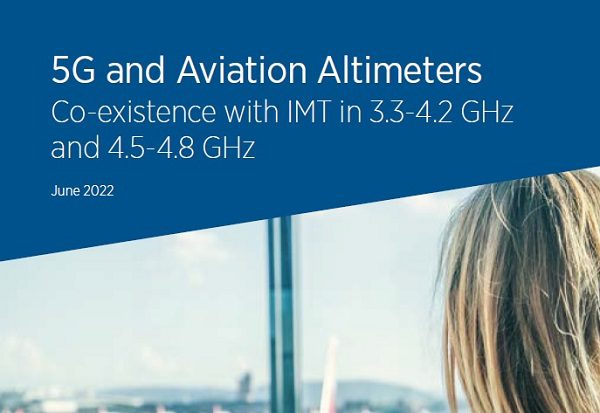- Background
Currently, 5G live networks in over 53 countries are using spectrum within the 3.3-4.2 GHz (the 3.5 GHz range). Roughly 80% of 5G network launches have used this band so far, totalling around 160 networks. The global media reacted to concerns from the aviation industry, in late 2021 to early 2022, that aircraft altimeters authorised to use the 4.2-4.4 GHz band would be impacted by 5G networks operating in the 3.5 GHz range.
So far, there have been no instances of interference between 5G and aviation. This 3.5 GHz range has been under consideration and development for mobile over the past 15 years and has been constantly studied at the ITU and by national governments during this period.
Co-existence between different technologies is at the foundation of sound management of the radio spectrum – ensuring that citizens derive the maximum benefit from this resource. This is the case in the 3.5 GHz range where the safe co-existence between 5G networks and aviation in adjacent frequencies is important.
- Spectrum Aspects
5G Networks and Altimeter Spectrum
While most networks currently use the lower part of the 3.5 GHz band (3.3-3.8 GHz), macro-cell networks are live also in the upper part (3.8-4.1 GHz). Some networks also use spectrum between 4.4-5 GHz. See the annex section at the end of this document for additional details on 5G networks in the 3.5 GHz band.
The aeronautical radionavigation service operates with radio altimeters in the 4.2-4.4 GHz band.
Sharing Spectrum
5G is an IMT technology and as such the way it uses spectrum is defined by the ITU. Mobile generations (2G, 3G, 4G, 5G and future 6G) are designed to share the spectrum with other radio systems. The technical and regulatory conditions under which they can operate are defined in the ITU’s Radio Regulations, changes to which are agreed only at World Radiocommunication Conferences (WRCs).
IMT technologies either share the same spectrum or are good spectrum neighbours with TV, satellites, Wi-Fi, aeronautical, military, radio astronomy, Earth exploration, deep space exploration and other technologies and radio services.
5G is the most spectrum efficient mobile technology to date. Its efficiency is three times higher compared to 4G while it makes active use of active antenna systems (AAS).


